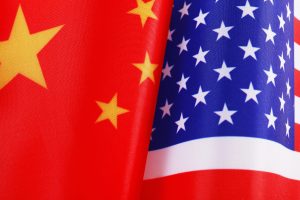The return of Donald Trump to the White House poses great uncertainty for the critical China-U.S. relationship. Some believe that relations will improve because Trump, unlike his predecessor, Joe Biden, is non-ideological. Trump is a transactional deal-maker who wants to avoid wars. Some have even cited early signs of surprising warmth in his rhetoric toward China. Trump claimed in January 2025 that he has “always had a great relationship” with Chinese President Xi Jinping.
Yet Trump’s campaign platform is defined by exorbitant trade protectionism. It is almost certain that he would impose steep hikes in tariffs on many of the United States’ largest trading partners, including China. He has already begun, with tariffs of an additional 10 percent being applied to all imports from China starting in early February. Trump’s mercurial and erratic nature has reinforced the Chinese leadership’s strategic conviction that it must prepare for the worst.
However, while relations between the U.S. and Chinese governments are unlikely to improve, the relationship between the two peoples can still weather the storms ahead. Bridge-building by the youth of both countries, especially those aged under 35, remains possible – and necessary. Indeed, the youth have already begun doing so.
Breaking Down Barriers Through Virtual Spaces
In mid-January, as news emerged of a possible, imminent ban on TikTok in the United States (which was subsequently delayed by the Trump administration), millions of American TikTok users flocked to the Chinese social media platform RedNote (Xiaohongshu). In one instance, over 50,000 American and Chinese users assembled in one room, titled “TikTok Refugees.”
For many American content creators, this excursion offered them their first glimpse into the lives of ordinary Chinese youth, including contemporary Chinese subcultures. These encounters cast reasonable doubt over some of the more hysterical portrayals of China’s economy and society in international media.
The mass migration of “TikTok Refugees” ended up humanizing the heavily stigmatized and exoticized “Other.” As one Chinese user put it, the Chinese and American users proved to be “more similar than different.” Learning Chinese became a matter of necessity for devoted American influencers who wished to remain on RedNote. In January 2025, Duolingo posted a 216 percent growth in new Mandarin learners as compared with the same time period last year.
The TikTok-RedNote saga exemplified the immense potential of youth subcultures in clarifying misunderstandings and humanizing the other in the China-U.S. relationship. This stands in sharp contrast to elite political discourse on the bilateral relationship, which is increasingly underpinned by suspicion and acrimony. A paper published by Michael Cerny and Rory Truex last December found that one-fourth of 500 surveyed U.S. foreign policy and national security professionals reported “professional pressure” on them to “voice a more hawkish point of view towards China” – thereby contributing toward hawkish groupthink. Similarly, many in the Chinese elite are wary of what Wang Jisi termed an “American strategy to Westernize and split up China.”
However, surveys that take into account different age groups reveal a more mixed picture. In a 2024 Pew survey, just 27 percent of Americans under 30 held very unfavorable views of China, as compared with 61 percent among those aged 65 or above. Clearly, young Americans are less likely to label China as an enemy.
The Space for Collaboration Between Chinese and American Youth
How should the youth step up? Three key recommendations follow.
First, Chinese and American people, particularly the youth, can jointly collaborate on causes to promote global good. Young entrepreneurs, researchers, and non-profit leaders should steer these efforts, in lieu of governmental actors bound by bureaucratic constraints. Comparing notes on best practices in tackling global health and socioeconomic inequalities, climate change, and pandemic management could help redress deeply salient problems confronting both countries. For instance, collaboration on clinical trials for cancer treatment and precision medicine, as spearheaded by initiatives such as Cure4Cancer, has been vital in reducing the time and costs of drug development.
Second, efforts should be directed toward strengthening depoliticized academic and education exchanges with reduced state involvement on the Chinese side, and shielding from undue political scrutiny on the American side. American and Chinese institutions can spearhead engagement with leading academic institutions in third-party nations across the rest of the West and the Global South to facilitate and convene integral conversations on East-West alignment over issues such as artificial intelligence safety and governance, nuclear non-proliferation, climate change, and supply chain management.
Finally, it is imperative that the youth in both the United States and China speak up against jingoism, bigotry, or fatalism. This is especially critical in the United States, which has in recent years witnessed a steep rise in anti-Asian racism, even as the mainstream U.S. media increasingly demonizes China. Young influencers, artists, writers, and academics should take to social media platforms to push back – with reason, humor, and authenticity – against the discourses that dominate the airwaves of the day. Whether it be on TikTok or X, there is clear appetite for – and value in – more balanced and truthful discussions of China in the United States, and vice versa.
The future will be challenging, especially as the relations between the Chinese and United States governments are likely to deteriorate given the mercurial, transactional foreign “deal-making” of Trump. Given such circumstances, people-to-people collaboration, spearheaded particularly by young Americans and Chinese who are more global and less encumbered by prejudice, will and must assume greater importance in managing the critical China-U.S. bilateral relationship.
This essay was first published in the Asian Peace Programme (APP) web page. The APP is housed in the National University of Singapore (NUS).

































